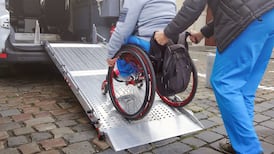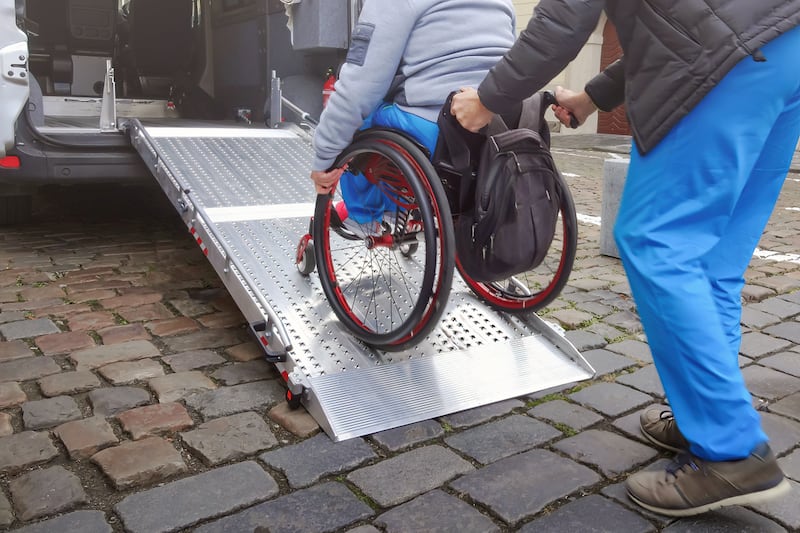Hyper mobility – having better than average movement and flexibility – is often seen as a desirable trait, especially for dancers, gymnasts and athletes, as the collagen and connective tissue allows the body to stretch or bend more in different positions.
An estimated 20 per cent of the population are hyper mobile, but research in recent years shows individuals who are hyper mobile are also more inclined to suffer from anxiety.
While anxiety does not necessarily predispose one to hyper mobility or vice versa, there does seem to be an overlap. Double-jointed celebrities, pop singer Mylene Klass and singer/dancer Shakira, both suffered from anxiety, while singer Michael Jackson – famous for his popping and locking dance moves and bendy legs – is also believed to have been both hyper mobile and anxious.
Helping hyper mobile individuals is a matter of conditioning and load. You can break down movements and teach people that more movement can be okay
Brain imaging shows people with hyper mobility have differences in the area of the brain related to fear. The collagen in such individuals, while it make joints especially flexible, appears to also affect blood vessels, making such people prone to an accumulation of blood in the veins of the legs.
It is thought pooling of blood leads to exaggerated cardiovascular responses in order for the body to maintain the output of blood from the heart. When the heart is put into a position where it has to work harder than normal to circulate blood, it puts the body on the verge of a fight-or-flight reaction and panic is easily triggered. In children, hyper joint mobility joints is now also considered to be a marker for anxiety.
In a recent study of 93 children, aged 8-15 with anxiety disorders, published in BMC Musculoskeletal Journal, it was found that hyper mobility was three times higher in such individuals.
Fear

Tipperary physiotherapist Niamh Egan agrees that hyper mobile individuals face unique challenges. Through her clinical practice and yoga and pilates studio in Nenagh, she has worked with individuals across the hyper mobility spectrum from those who are a little bit flexible, perhaps from natural ability or from years of exercise, to those who are so flexible they are at risk of injury and pain.
“I find when I work with hyper mobile people in yoga that they are generally more body aware when exploring more extreme ranges of motion and with guidance they are good at protecting themselves in a pose. In general, I am hoping to get hyper mobile people to strengthen their bodies and to not let hyper mobility hold them back.”
Although hyper mobility can be an advantage, it can be distressing. In her practice, Egan has treated people who are so hyper mobile that they have a history of dislocation.
“For such people there would be a lot of fear and avoidance around movement. Helping hyper mobile individuals is a matter of conditioning and load. You can break down movements and teach people that more movement can be okay.
“Your body can learn something is safe, you can teach people how to become body aware and how to align. In terms of yoga and people feeling anxious, I’d teach people how to relax the nervous system; breath work is key, I always work on helping people to calm them down in poses so the feel safe and are safe.”
Understandably, fear of pain and or dislocation is in itself going to cause anxiety too. “Hyper mobile people struggle initially with alignment issues but through teaching them techniques they can achieve incredible things. I see hyper mobility all the time in my classes, some people can access poses easily that might take somebody else years to achieve but such individuals have to learn how to protect themselves, so that they don’t sink into too deep a pose which might not be safe.”
Body/mind connection
Being hyper mobile herself though certain joints, especially through her lumber spine and shoulders, Egan has a “life-long interest” and “curiosity” in body movement and in the body/mind connection.
A former gymnast, she trained in pilates straight after her physio qualification, she has a masters in sport and exercise medicine, her mother is a yoga teacher and psychotherapist and a sister in also a yoga instructor. Egan has been to India many times and to Bali to train in yoga and meditation and she has even taken contortionist classes in London as a "fun" exercise to explore more the movement range of her own body.
Since she is partially hyper mobile herself and since lots of people get into yoga to calm busy minds what does she think about the hyper mobility/anxiety connection?
“l think to be honest, I could have a tendency to be anxious, but then life is so demanding. I set up Physiofit five years ago and it was really successful from the off and I was doing physio classes and yoga and pilates and I had to learn that sometimes you can do too much, sometimes you have to bring in support.
“When I went to see my teacher in Bali I was nearly burnt out and I found her so helpful, she teaches a great process with anxiety, the biggest challenge we all have is connecting with sensations in the body, there’s too much going on in all our heads.”

















